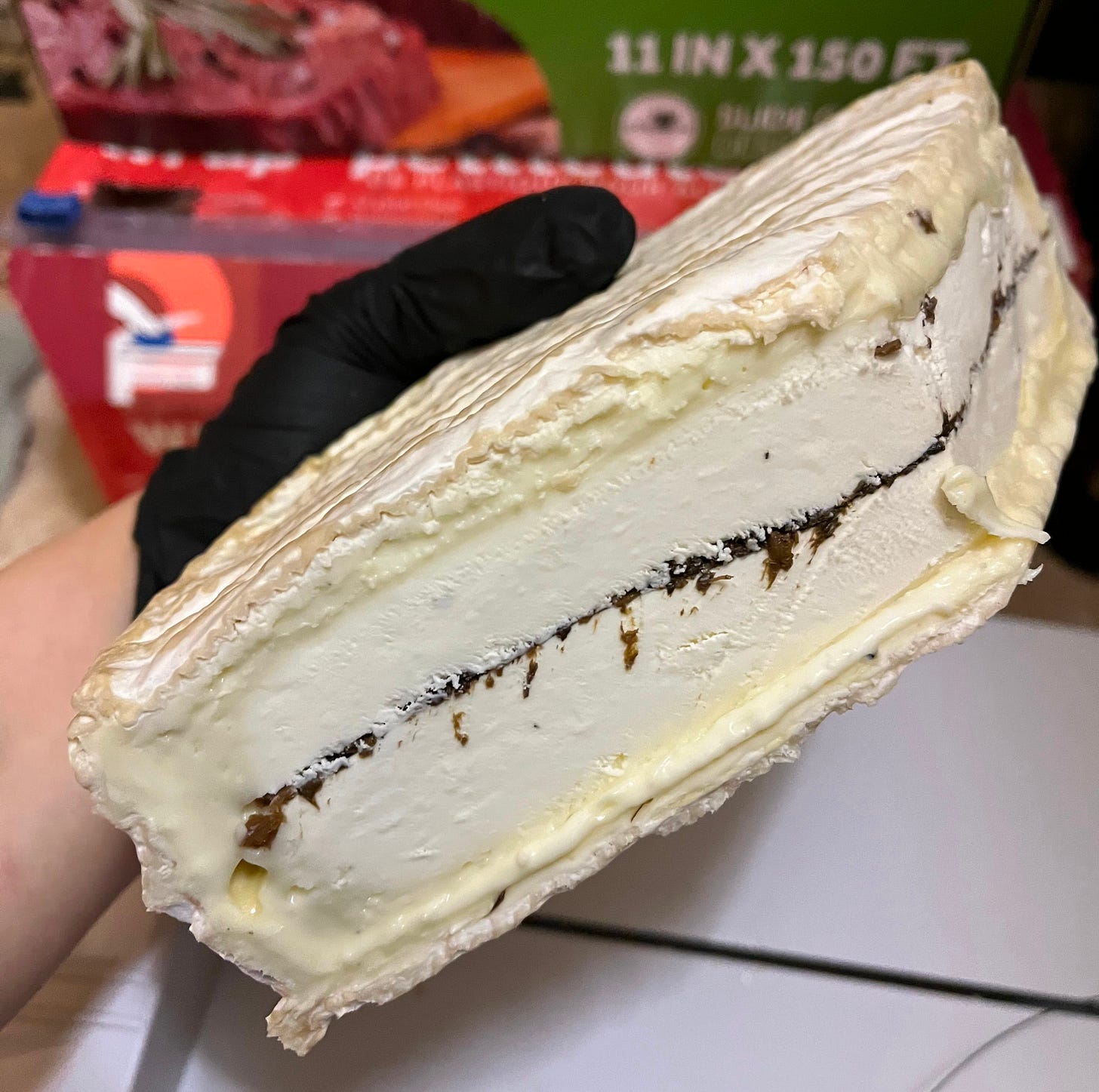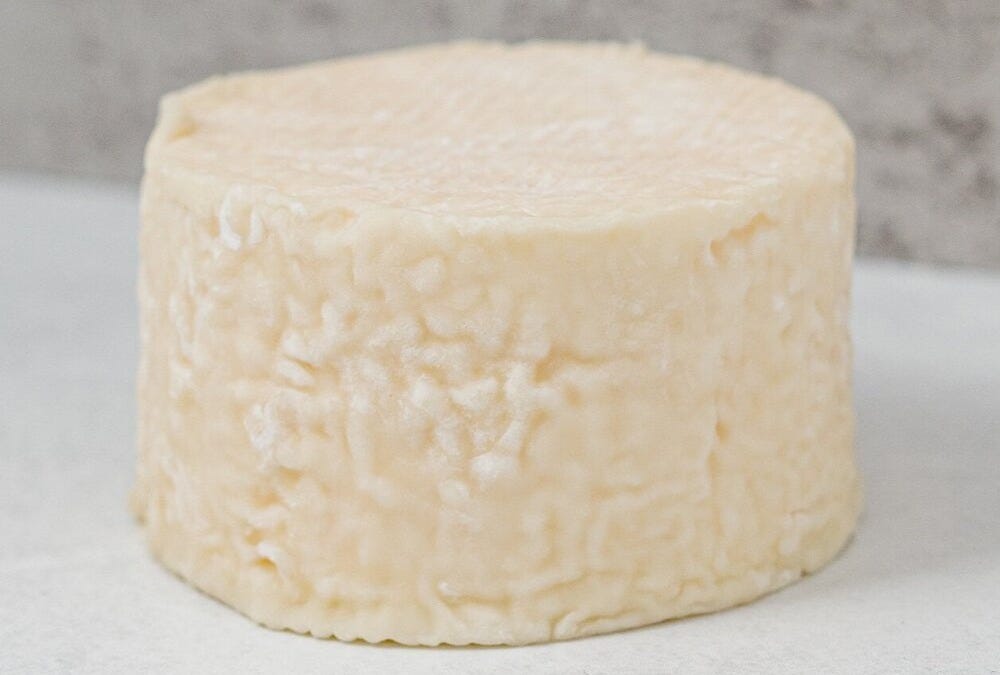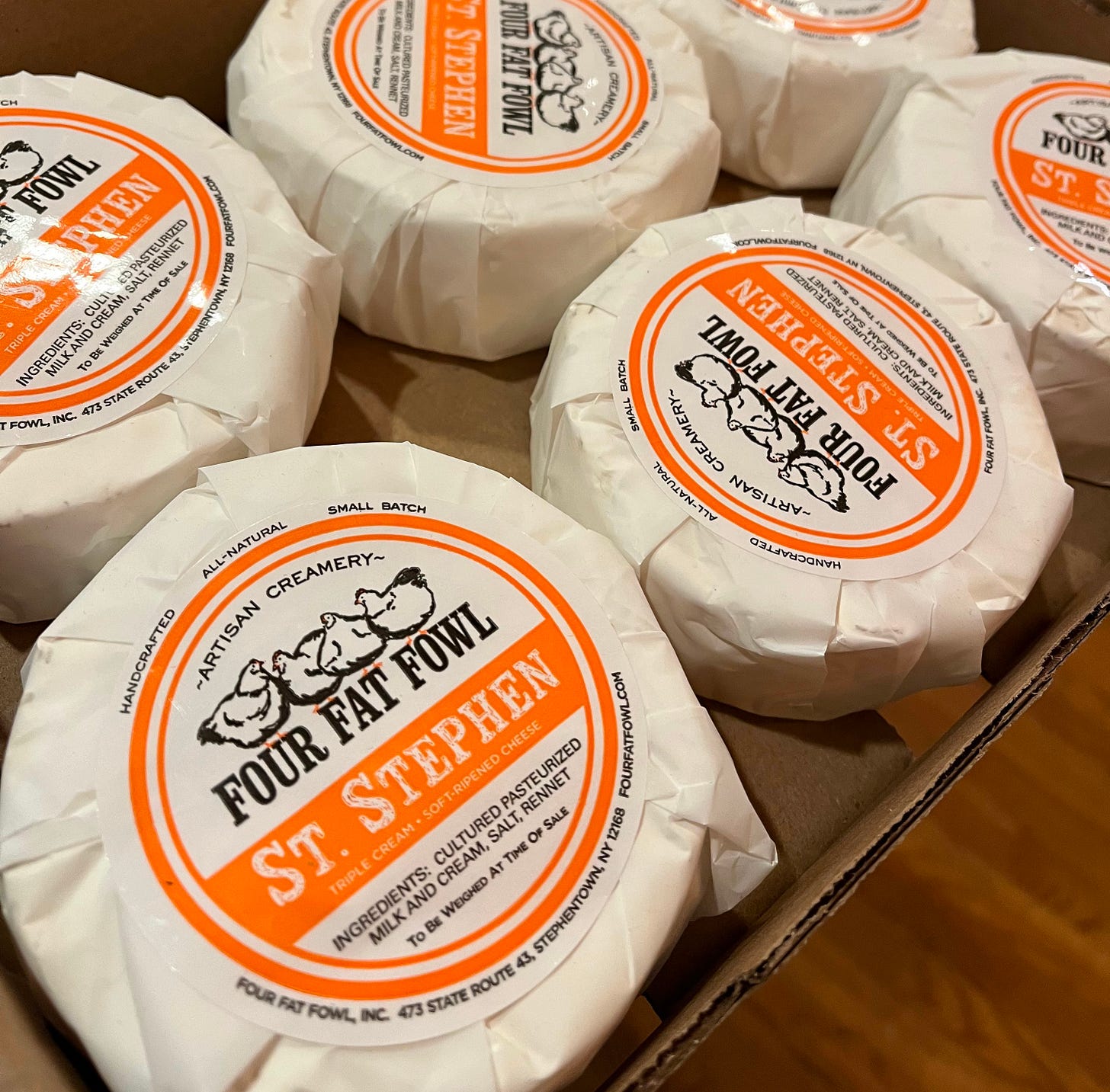Nothing pleases a crowd at the holidays like a decadent triple creme cheese.
Cut open the wheel and place it on a cheese board, and you automatically feel festive and luxurious.
You may be wondering what I mean by a triple creme.
These cheeses belong to a category most people refer to as “brie.”
Cheese pros call them “bloomy rind cheeses” or “soft-ripened cheeses.”
Bloomy rind — obviously — alludes to the rind. The edible, pillowy rind.
Soft-ripened also refers to the rind — because these cheeses are eaten young and continue to ripen in the cheese case — because the rind is alive.
That’s why these cheeses have what’s called a “creamline” running along the rind with a firmer paste in the middle. They ripen from the outside in.
So what makes these rinds so unique? It’s all about that bacterium, baby.
Traditionally, soft-ripened cheeses are made using molds called “penicillium candidum” or “penicillium camemberti.”1
These molds were commonly found in the household cellars where these cheeses were ripened back in the day — and the cheese’s small format reflects a family farm with only a few cows.
It always amazes me how much of today’s “fancy food” comes from peasant traditions.
Modern cheesemakers are also making bloomy rind cheeses with a bacterium called Geotrichum candidum. If you’ve ever seen a cheese rind that looks like a brain instead of a cloud, you’ve seen a Geotrichum rind.
Although these cheeses may look like something out of a haunted house — the geotrichum rind actually produces mellower, sweeter flavors than traditional molds.
Geotrichum cheeses also last a little longer before they go full ammonia — which is how you know a bloomy rind cheese is too ripe2, even for a Frenchman.
Speaking of the French, let’s talk about what “double creme” and “triple creme” mean.
Basically, the terms refer to the amount of butterfat contained in the cheese’s dry matter3 — and both double creme and triple creme cheeses are “cream enriched.”
The French created the monickers “double creme” and “triple creme” to tell consumers how much “enrichment” to expect.
A traditional brie style cheese contains about 45% butterfat.
A double creme contains 60-74% butterfat.
A triple creme contains over 75% butterfat.
Talk about decadent.
No wonder a triple creme is such a gooey, buttery delight.
Bloomy rind cheeses are made with all types of milk, but the most common is cow.
Bucheron is a famous bloomy rind goat — and Blakesville Creamery in Wisconsin makes some of my favorite bloomy goat cheeses here in the US.
Soft-ripened sheep’s milk cheese is more difficult to find — but Old Chatham Creamery and Green Dirt Farm both offer delicious American options.
And since my jam is American artisan cheese, let me tell you about my favorite American triple creme4 — Four Fat Fowl’s St. Stephen.
It’s like butter and cheese had a baby.
The edible rind is pillowy and mild, while the paste — the delectable, ooey gooey paste — melts in your mouth.
Made from pasteurized cow’s milk,5 St. Stephen celebrates the milk’s creamy deliciousness. Some double and triple creme cheeses have herbal notes or mushroom overtones — but St. Stephen is pure, buttery pleasure.
I discovered St. Stephen when I was undergoing my Cheese Conversion while working for the Hilariously Grumpy Frenchman.
It was the top seller on our made to order cheese boards, and people often requested a wheel to go on their way out.
We actually had to stop selling wheels to go because we would run out of cheese on a busy Friday night and not be able to get more until Wednesday.
And when we were out of St. Stephen — hoo boy the people were not happy. Other creamy cheeses just wouldn’t cut it.
It has a certain magic. It’s universally beloved.
It’s one of the cheeses I call as “Safety Cheeses.”
I’m going to send out my list of Holiday Safety Cheeses next week, be sure to subscribe and keep an eye on your inbox!
Your local cheese shop — and maybe Whole Foods? — might carry St. Stephen, or your monger can guide you to other delectable bloomy rind options.
A few of my American favorites:
Sweet Grass Dairy Green Hill — cow, double creme, Georgia — delightfully creamy with subtle mushroom notes.
Blakesville Creamery Lake Effect — goat, Wisconsin — spreadable creamline with firmer middle — a delicious and friendly cheese for the goat-curious.
Goat Lady Dairy Snow Camp — goat and cow, North Carolina — it looks like a mini bucheron, but the cow’s milk softens the tang of the goat’s milk and gives this cheese a creamy richness.
You can find these lovely options at many grocery stores:
Brillat Savarin, France
Belletoile, France
St. Andre, France
La Tur, Italy
There is no better pairing with soft-ripened cheeses — or any cheese imo — than your favorite bubbly.
The bubbles are a refreshing lift after the thick, creamy paste.
We’ve been enjoying a sparkling Vouvray — Loire Valley Chenin Blanc — recently.
Fresh and vibrant on the palate, the Man says that he likes it because the acid doesn’t bite.
And at around $20 a bottle6, what’s not to love?
And now for your dose of Mr. Kitty…
He’s helping.
Curd Culture is a reader supported publication. Thank you for supporting my dream of using my cheese experience to make a difference on two issues I care about: sustainable family farming and animal welfare.
Yep, it’s named for Camembert.
A “farty” smell or a bit of ammonia that blows off when the cheese is unwrapped is fine.
Cheese with all the water removed.
The American labeling system is a little more lax: double creme and triple creme don’t refer to a percentage of butterfat, but indicate that the cheese has been cream enriched. Basically, it’ll be buttery and decadent.
Pro tip for anyone who must eat cheese made with pasteurized milk: Any raw milk cheese sold in the US must be aged 60 days, according to FDA regulations. Anything creamy or fresh will be pasteurized, even if it’s imported.
We sell it for $18.99 at my shop in Richmond, VA — but prices on French wines vary state to state.












